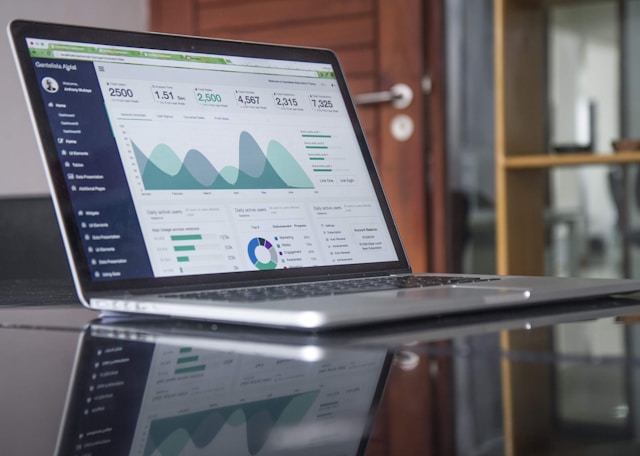For decades, sports betting has existed, fueled by instinct, local knowledge, and a hefty dose of luck. It was a world largely divorced from sophisticated data. Now, however, the landscape has fundamentally shifted. The industry – and the perception of it – is being reshaped by a silent, powerful revolution: the integration of advanced analytics, increasingly complex odds formulations, and the nascent, yet potent, capabilities of artificial intelligence. It’s not about predicting the outcome with absolute certainty, but about quantifying probabilities with an accuracy previously unimaginable. Let’s peel back the layers and examine what’s driving this transformation.
The Evolution of Odds: Beyond the Simple “Favorite”
Traditionally, sports betting odds reflected a relatively straightforward assessment of relative strength. A “favorite” was assigned a lower payout than a “longshot” because, according to the bookmaker, it *should* win. This system, while functional, operated on guesswork. Modern odds are generated using a complex mathematical model based on a vast array of available data. The ‘vig’ – the bookmaker’s profit margin – remains, but its placement is now meticulously calculated, accounting for everything from team performance statistics to weather forecasts and even social media sentiment. Many operators now leverage dynamic odds, adjusting prices in real-time based on minute shifts in betting patterns. The goal isn’t just to offer competitive odds, but to subtly influence the flow of money, ensuring a consistent profit.
Historical Data and Regression Analysis
The bedrock of this new system is historical data. Every conceivable game outcome and associated statistic—shot charts, passing networks, defensive efficiency, past head-to-head records—is carefully collected and stored. Regression analysis then steps in, attempting to identify correlations between these variables and future outcomes. It’s a statistical technique that seeks to understand the relationship between independent variables (like passing attempts) and a dependent variable (like points scored). This sort of meticulous investigative work, reminiscent of the detailed reporting done in investigations published by certain prominent news outlets, begins to build a predictive model.
Moving Average and Poisson Distribution
Beyond simple regression, more sophisticated techniques are employed. Moving averages smooth out fluctuations in recent performance, providing a more stable picture of a team’s capabilities. The Poisson distribution – originally developed for modeling the number of events occurring in a fixed interval of time – is increasingly applied to assess the probability of scoring, considering factors like the number of possessions and the quality of defensive opportunities. The interplay between these methodologies creates a considerably nuanced assessment of risk compared to previous methods.
The Rise of Sports Analytics: More Than Just Simple Stats
Sports analytics extends far beyond just tracking points per game. It’s a holistic approach encompassing a vast spectrum of data. Teams are now employing dedicated analytics departments to sift through mountains of information, identifying subtle advantages and uncovering previously overlooked insights. Consider the work done by organizations examining rotational player performance, the importance of specific court locations, or even the physiological responses of athletes during competition. Many of these insights – once considered esoteric – are now regularly integrated into coaching strategies and player development plans.
Key Data Points Under Scrutiny
- Advanced Metrics: Metrics like Expected Goals (xG) in soccer, or True Shooting Percentage in basketball, attempt to measure a player’s efficiency beyond traditional scoring.
- Player Tracking Data: Systems that track player movement on the field or court provide a granular understanding of where athletes are spending their time and the impact of their positioning.
- Injury Data and Recovery Rates: Predicting the impact of injuries, both immediate and long-term, is a critical component of assessing a team’s chances.
- Opponent Analysis: Deep dives into opposing team statistics and tendencies – including weaknesses in their defense or specific strategies – are crucial for formulating a winning game plan.
How Analytics Inform Betting Lines
The data collected through analytics isn’t merely used to improve on-field performance; it’s also the fuel behind the increasingly precise betting lines. Sportsbooks aren’t relying solely on their own judgment or the opinions of oddsmakers; they’re using sophisticated algorithms that incorporate analytics data to determine the most accurate probabilities.
Artificial Intelligence: The Next Frontier
While statistical modeling has already revolutionized the industry, the introduction of artificial intelligence represents a truly transformative moment. AI algorithms, particularly machine learning models, are capable of identifying complex patterns and relationships that would be impossible for humans to discern. These systems aren’t just predicting outcomes; they’re learning from vast amounts of data, constantly refining their predictions and adapting to evolving circumstances. Some firms, often utilizing techniques observed in academic research regarding complex systems, are now experimenting with neural networks to simulate game scenarios and predict the probability of various events unfolding.
| AI Technique | Description | Potential Application in Betting |
|---|---|---|
| Decision Trees | Creates a tree-like model to classify data based on a series of decisions. | Predicting whether a team will cover the spread based on a series of factors. |
| Neural Networks | Mimics the structure of the human brain, capable of learning complex patterns. | Analyzing complex game situations, predicting player performance, and identifying subtle betting opportunities. |
| Reinforcement Learning | An agent learns to make decisions by interacting with an environment and receiving rewards or penalties. | Developing automated betting strategies that adapt to changing market conditions. |
The Black Box Problem and Model Transparency
It’s important to acknowledge a significant challenge with AI in sports betting: the “black box” problem. Many of these sophisticated models are so complex that it’s difficult to understand *why* they’re making certain predictions. This lack of transparency raises concerns about fairness and potential biases. There are ongoing debates about the need for greater model explainability, ensuring that betting lines aren’t solely based on opaque algorithmic calculations. Similar discussions around transparency regularly surface within reporting on risk management practices within regulated financial sectors, highlighting the underlying need for verifiable logic.
Ethical Considerations and the Future of Betting
As AI becomes increasingly prevalent, ethical considerations are coming to the forefront. Potential issues include market manipulation, the amplification of biases, and the potential for an uneven playing field between sophisticated bettors and those relying on intuition. Furthermore, the relentless pursuit of predictive accuracy could erode the inherent entertainment value of sports. It’s a delicate balance – leveraging technology to enhance the betting experience while preserving the unique charm and unpredictability of the games themselves. The challenge isn’t simply about building the most accurate predictive model, it’s about ensuring that the system is fair, transparent, and ultimately, enjoyable for everyone involved.
Question & Answer
Q: Is it possible to beat the system using AI?
A: That’s the million-dollar question, and the exact answer is evolving. While AI offers impressive predictive capabilities, the market isn’t static. As more people use AI, their collective betting activity itself generates data that the AI can learn from, potentially creating a positive feedback loop. Furthermore, sophisticated bookmakers are constantly adapting their own algorithms in response to AI-driven betting patterns. Historically, publications detailing successful strategies in highly competitive markets, like commodities trading, have reinforced the idea that sustained, profitable advantage is exceedingly difficult to achieve. However, the constant technological advancement means opportunities persist, and those with the resources and expertise to develop and deploy innovative AI solutions will likely retain an edge – at least for the foreseeable future.
Q: How does weather impact the calculations?
A: It’s a surprisingly significant factor. Models now routinely incorporate hyperlocal weather data – wind speed, air pressure, humidity, even the type of precipitation – to assess its impact on player performance, particularly in outdoor sports like football and baseball. A sudden shift in wind direction, for instance, can dramatically alter a quarterback’s ability to throw accurately, or a hitter’s swing effectiveness. The application of meteorological data adds another layer of complexity, reflecting a wider trend in embracing granular, real-world information.

